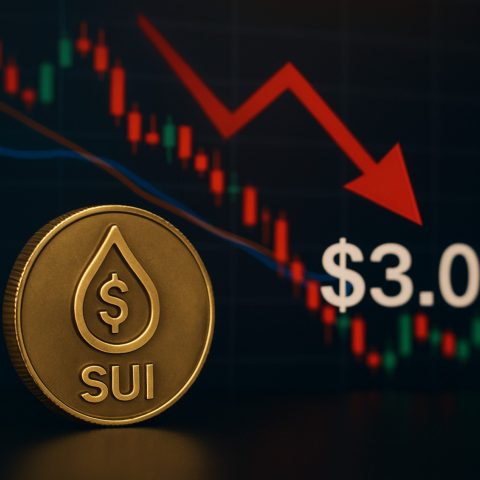Innovating Governance
Elon Musk is at the forefront of a new initiative aimed at revolutionizing government operations, known as the “Department of Government Efficiency.” This ambitious project is focused on leveraging blockchain technology to tackle persistent issues of waste and opacity within public sectors.
Musk’s vision emphasizes the potential of blockchain to enhance transparency across government functions. By implementing decentralized systems, he believes inefficiencies can be significantly reduced, allowing for a smoother flow of information and resources.
The exploration into blockchain is not merely a technological upgrade but a comprehensive approach to modernizing governance. Musk aims to create a system where every transaction and operation can be tracked transparently, potentially eliminating corruption and fostering greater trust among citizens.
As the project develops, government bodies will have the opportunity to engage with blockchain solutions that could lead to increased accountability and improved service delivery. Musk’s involvement sends a clear message about the importance of innovation in tackling long-standing systemic issues in government.
With this initiative, Musk is not just envisioning a more efficient government; he is paving the way for a future where technology plays a pivotal role in public administration. The question remains: Will this push for blockchain integration usher in a new era of governance? Only time will tell.
Implications of Blockchain in Governance
The advent of blockchain technology in government operations heralds not just an internal shift in public administration, but a broader societal transformation. As Elon Musk champions the establishment of a “Department of Government Efficiency,” the implications extend deeply into the realms of trust, accountability, and citizen engagement. By enhancing transparency through blockchain, citizens may become more active participants in governance, prompting an era where public services are not just delivered but co-created. This shift can foster a more empowered electorate that demands responsiveness and accountability from their leaders.
Moreover, the integration of such technology might catalyze global economic changes. If successful, other nations may adopt similar frameworks, leading to a worldwide movement toward more transparent and efficient public sectors. This could, in turn, attract businesses and investments concerned about governance quality and stability, reinforcing the notion that transparent governance can also underpin economic vitality.
On the environmental front, blockchain could facilitate sustainable practices through better resource management and tracking systems. Transparency in procurement, for instance, can ensure that projects prioritize eco-friendly practices.
As we look to the future, the long-term significance of Musk’s initiative will hinge not only on technological adoption but also on the cultural shift towards prioritizing integrity and efficiency in governance. If this paradigm shift gains traction, it may well redefine the landscape of public service for decades to come.
Elon Musk’s Blockchain Revolution: Transforming Government Efficiency
Introduction
Elon Musk is spearheading an innovative project aimed at overhauling government operations, dubbed the “Department of Government Efficiency.” This initiative harnesses blockchain technology to address longstanding issues such as inefficiency and lack of transparency within public sectors. Here’s an in-depth look at the implications, features, and prospects of this groundbreaking movement.
Key Features of the Initiative
1. Blockchain Implementation: The foremost feature of Musk’s initiative is the integration of blockchain technology. This decentralized approach is designed to make government transactions more accessible and secure, helping to minimize bureaucracy and streamline processes.
2. Transaction Transparency: A core objective is to enable tracking of every transaction and operation within the government. This visibility aims to prevent corruption by making it almost impossible to manipulate records without detection.
3. Enhanced Accountability: By utilizing blockchain, government bodies could increase their accountability to the public. This could positively transform citizen-government relations as people gain more insight into how public funds are utilized.
Pros and Cons
Pros:
– Increased Trust: A transparent system helps foster trust between citizens and their government.
– Reduced Waste: Optimizing operations can lead to fewer resources being squandered on bureaucratic red tape.
– Streamlined Processes: Decentralized systems can expedite services that have traditionally been slow and inefficient.
Cons:
– Implementation Challenges: Transitioning to a blockchain-based system involves significant technical and logistical challenges.
– Resistance from Traditionalists: Those accustomed to conventional systems may resist change, impacting adoption rates.
– Security Concerns: While blockchain is considered secure, the introduction of new technologies can create unforeseen vulnerabilities.
Use Cases
Blockchain integration can manifest in various government functions such as:
– Public Procurement: Making bidding processes transparent and traceable can help eliminate corruption.
– Voter Registration: A transparent system could bolster voter confidence in electoral processes.
– Social Services: Tracking the distribution of resources for welfare programs can ensure that aid reaches the intended beneficiaries.
Trends and Predictions
As we move forward, the increasing demand for transparency and efficiency in government operations suggests that more entities may explore blockchain solutions. Here are some trends to watch:
– Growing Interest in Decentralization: As blockchain technology gains recognition, expect more governments to adopt decentralized models for various functions.
– Collaboration with Tech Leaders: Alliances between tech innovators and government agencies are predicted to become more commonplace, fostering an environment of shared expertise and resources.
– Global Movement Towards Smart Governance: Other countries may follow suit, creating a global trend toward smart governance characterized by efficiency and transparency.
Conclusion
Elon Musk’s initiative to create a “Department of Government Efficiency” through blockchain technology could revolutionize how public sectors operate. If successful, this project may serve as a blueprint for future innovations in governance, setting the stage for a new era marked by transparency and accountability. As societal demands for efficient governance rise, the integration of such technologies will likely play an essential role in maintaining the trust of citizens.
For more insights on technology and innovation in governance, visit the Musk Foundation.






